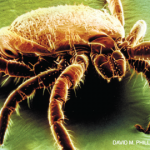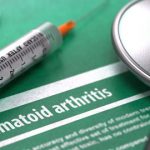The ARP has a lot to offer members, including training and professional development, patient resources and volunteer match opportunities.
Search results for: pediatric

Ethics Forum: Beware Your Intellectual Conflicts of Interest
A senior rheumatologist with extensive experience in the management of systemic lupus erythematosus is asked to help draft clinical guidelines for the treatment of lupus nephritis. Neither she nor her family members receive grant funding nor does she consult with any pharmaceutical or biotechnology companies. She does have strong clinical opinions based on current evidence…

How Rheumatologists Can Better Partner with Social Workers
When Liz Morasso, LCSW, facilitates a Families Living with Rheumatic Diseases support group at Children’s Hospital Los Angeles, she empathizes with the struggles and challenges of her young patients. Ms. Morasso was only 16 years old when she was diagnosed with both systemic lupus erythematosus (SLE) and rheumatoid arthritis (RA). She knows all too well…

The Type I Interferon Pathway’s Influence in Connective Tissue Disease
Type I interferon appears to play a role in disease susceptibility and pathogenesis in several classic connective tissue diseases, at least in some patients. Below, I present evidence supporting this connection, explore potential missing links in pathogenesis and discuss biological treatments that target the pathway. The Type I Interferon Pathway Interferons are a class of…

A Month in a Colombian Hospital (with the ACR-PANLAR Exchange Program)
Colombia is a beautiful country with a rich cultural history that has made many social advances over the past decades. I was privileged to spend a month rotating with rheumatologists in San Vicente de Paul Hospital in Medellín, the City of Eternal Spring. As part of the ACR and the Pan American League of Rheumatology…

ACR Volunteer Leaders Visit Capitol Hill, Lobby for 5 Issues
WASHINGTON, D.C.—Dozens of rheumatology leaders met with more than 100 politicos on Capitol Hill in mid-May as part of the ACR’s annual Advocacy Leadership Conference. Armed with research and advocacy training concerning a handful of important issues, rheumatologists, rheumatology interprofessional team members, government affairs specialists and others met with federal lawmakers, legislative aides and correspondents….

Lyme Arthritis: Presentation, Diagnosis & Treatment
A 52-year-old man living in greater Boston with a history of hypertension presented at our rheumatology clinic with bilateral knee pain and swelling. He had been in his usual state of health until four months earlier when he developed right knee pain and swelling without an incipient trauma, which did not improve with non-steroidal anti-inflammatory…

Adalimumab for JIA-Associated Uveitis: 5-Year Follow-up
A five-year study in patients with juvenile idiopathic arthritis-associated uveitis found drug-induced disease remission did not persist once adalimumab was stopped after long-term treatment.
Making Sense of Drug Pricing Legislation
A number of bills have been introduced in the 116th Congress to mitigate the impact of treatment and drug costs on U.S. patients. The ACR has reviewed the bills and supports those that most closely align with its positions on access to care.

The Rescue: Moving RA Patients from Adalimumab to Baricitinib
The phase 3, RA-BEAM study found RA patients who were switched from adalimumab to baricitinib experienced improvements in disease control even in the absence of an adalimumab washout. In the study, the change was not associated with an increase in adverse events or infections…
- « Previous Page
- 1
- …
- 53
- 54
- 55
- 56
- 57
- …
- 112
- Next Page »